While governments – national, regional and local, continue to grapple with the situation, and a large number of businesses and charities are equally trying to manage, even survive – note, for example, the grave problems being experienced in the horticultural and agricultural sectors; universities, too, are feeling the strain. This is certainly the case sorting out what to do for the best for students regarding teaching, assessments and exams, and thus matters of progression and completion of degrees.
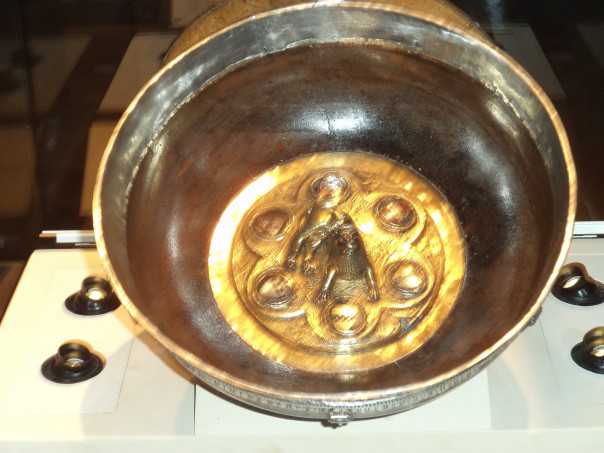
As I mentioned last week, for postgraduates, especially in history, access to archives and libraries is a very major issue, and it is great to report at a very local level the Kent History Postgraduate group has come together, as I would always expect it would, to support each other at this challenging time. Consequently, as well as the main group using Teams, we also have a subsidiary group, as well as more informal groups communicating via older methods such as phone and email. Similarly, supervisors are supporting undergraduate and postgraduates, which from the Centre’s perspective this week has meant two video-link supervisions, again using Teams, and members of the Centre’s staff: Professor Louise Wilkinson, Dr Diane Heath and I have been in communication, not least because we will be saying goodbye to Louise later this month as she moves (virtually at the moment) to Lincoln. As I have said in the past, and everyone I know agrees, she will be a tremendous loss to CCCU, the communities of Canterbury city and cathedral, and from a personal point of view, CKHH. Nevertheless, it is a fantastic opportunity for both Louise and Lincoln, so all at the Centre wish her all the very best for the future.
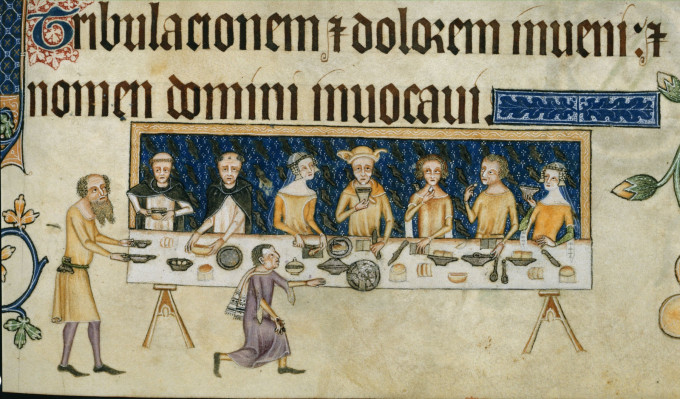
Now for something completely different, and although I had thought about featuring civic responsibility in the early Tudor period using evidence from Sandwich and Dover in this part of the blog, instead I have decided to go for virtual material culture as it seems equally appropriate! Consequently, I’m going to return to a favourite item – the mazer bowl, but those I’m going to talk about no longer survive, rather they ‘exist’ in an inventory, compiled by the refectorer at Canterbury Christ Church Priory in 1328. To recap, mazers are turned wooden drinking bowls, they were frequently made of maple wood and often have additional decoration in the form of a silver or silver-gilt band around the rim, a medallion at the base, sometimes a foot and rarely a cover. They vary in size, the degree of ornamentation and so quality, and by the late Middle Ages were ubiquitous. Some medallions are plain, but among the 19 designs listed in the Canterbury inventory of 180 mazers were those showing the Virgin Mary, a lion and shield, a rose, a boar, and a vine and winepress. A small number (9) were said to incorporate jewels, perhaps in the foot, as Randulf de Priteswell’s which had 4 in the foot, but some of the other jewels were probably at the base of the mazer. Interestingly, 12 of these mazers had names, some such as Crondale and Knolton may be linked to monks from those places, a cover called angel may have been named for its decoration, but it is far less clear why there were mazers called Hare and Lorechon. However, the most common means of identification in the inventory was the monk ‘owner’ and a hundred different monks were listed accounting for 148 of the mazers, three men having four each.
For those of you who know about medieval monasteries, you might wonder why I’m mentioning individual ownership instead of talking about articles held in common within the priory. So what is going on? The answer, I think, may be something more complicated than a simple binary of communal/individual and that’s what I’m going to explore. For only two of the 90 plus named monks so far identified in the inventory were seemingly alive in 1328. A few had been dead for over a century, the earliest being Prior Wibert who had died in 1167, although most had been monks in the late thirteenth century. Moreover, the refectorer’s list appears to have included almost all of these late thirteenth-century brethren because in 1328 there were about 65 monks at the cathedral priory, more than double the number in 1298. Thus, Roger de Holyngbourne was not referring to contemporaries when he identified the mazers but to his deceased brethren to whom the mazers had belonged in the relatively recent past. That is many of the monks in 1328 would have known these men or would have known of them through hearsay. So how were the mazers used and what may they have meant to the community when the monks filed into the refectory twice a day to eat their dinner and supper?
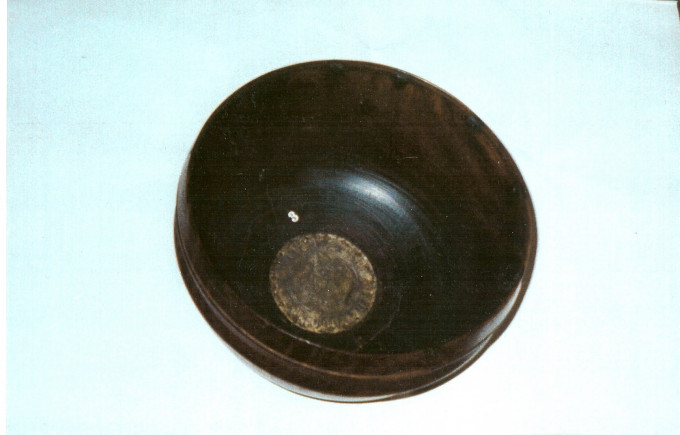
It is not clear how and when the refectorer acquired each individual mazer, but it seems far more likely that they had been given to the priory by individual monks rather than that the priory had purchased distinctive mazers to give to specific brethren. If this was the case it is significant because it suggests that individual monks offered a mazer to the priory, the particularity of its form a matter of their choice. Even though each monk may have had the use of ‘his’ bowl while he lived at Canterbury, it was no longer owned by him becoming instead part of the priory’s plate. However, in theory at least, this raises certain difficulties for as a Benedictine house the concept of individuality, especially regarding a monk’s possessions, was an anathema. To hold in common had been St Benedict’s directive, albeit this would not have precluded the giving of a gift to the monastery by those seeking entry. Even though circumstantial, this may suggest that mazers allocated to named monks by Roger in 1328 had been given to the house when those same monks first ‘turned from the world’ and/or at their profession. Amongst the ordinances governing the cathedral priory, which comprised ‘The Monastic Constitutions of Lanfranc’ and later directives by Archbishop Winchelsey, were those covering the entry of novices and their progress to ordination. Each stage in this move from the secular world to becoming a monk was governed by ritual involving the applicant, the prior and the convent. The first of these occasions was the withdrawal from secular life at which the petitioner sought formal entry to become a novice. The ceremony included his first tonsure and the removal of his secular clothes and their replacement by a monastic habit without a cowl. Notwithstanding an absence of any references in the priory’s archive to gifts given by the petitioner at this time, it would appear to have been a fitting occasion, perhaps seen as marking the new entrant’s abandonment of personal possessions for the communal life of the monastery.
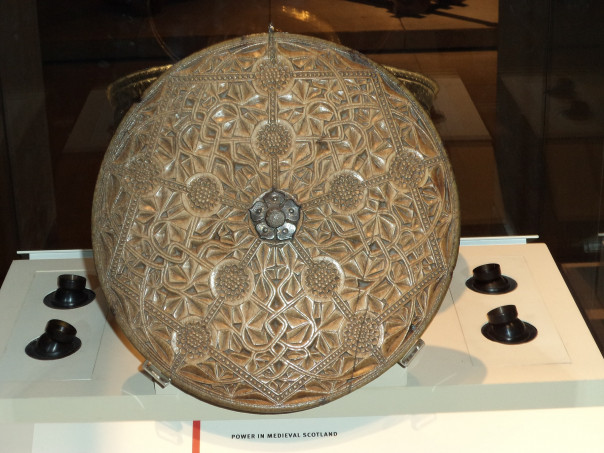
Alternatively, such a gift may have been viewed as more appropriate at the time of profession. At this point the novice was received into the convent as a monk, being allowed thereafter to perform all the sacred duties except those reserved for priests. The ceremony was long and complex, involving elements such as the novice’s written profession that was read by him to the assembled convent before being placed on the altar, and the removal of his tunic by the prior who then clothed him in his cowl, a symbolic ending of his ‘old’ life and his beginning as a ‘new man’. Again, there are no specific references to the giving of gifts on such occasions, but the donation of a mazer might be seen as especially appropriate because of its association with hospitality and community. In addition, it had the potential to become a prized piece of plate, although the level and type of decoration and embellishment was presumably linked to the wealth and status of the donor and his family. Thus, the mazer mattered to the giver and receiver at the time it was given, and if the monk had use of it while at the priory it probably continued to matter to him. As he held it in both hands while drinking ale or wine, as he would the chalice, it could have been a twice daily reminder of Christ’s sacrifice, as well as his promise to God and to those around him. Furthermore, its distinctive form underlined that it was his gift, a reminder of his place within the monastery and, perhaps like his surname, a reminder of his earlier life and family.
Thus far I have considered the potentially dynamic relationship between communal and personal possessions respecting the initial use of some of these mazers in the late thirteenth century, but what about this relationship in 1328? Unless the mazers said to belong to deceased monks were no longer used, which seems unlikely, the current user in the early fourteenth century was reminded daily of his predecessor, possibly someone he had known personally. This brings me to thinking about commemoration and memory, especially important features of monastic life. We know that former members of such communities were commemorated in a variety of ways, including the celebration of obits (anniversary of the day of death) and the giving of corrodies, the latter comprising the placing of the deceased monk’s portions of food and drink on the refectory tables at meal times for a set period after his death, the whole given to the poor once the meal ended. At Durham Priory and St Alban’s Abbey, and perhaps at other Benedictine houses, this linking of meals and commemoration was also temporal. Immediately after dinner the monks went to the monastic cemetery where their predecessors were buried and stood bare headed for a considerable time to pray for the souls of their departed brethren before returning to the cloister.
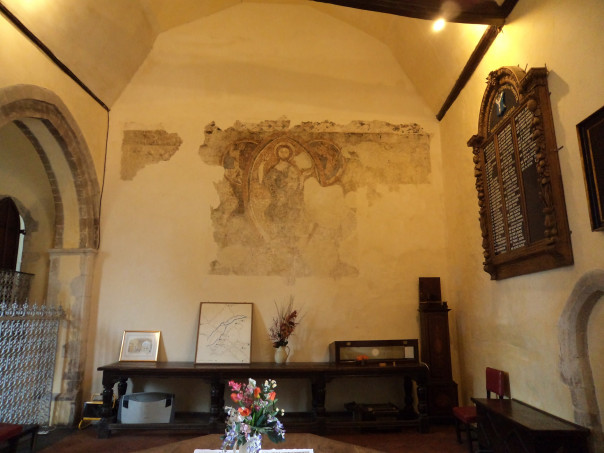
Although I have no proof that the mazers at Canterbury in 1328 were understood in this way, it seems feasible that the act of drinking in the refectory may have meant that the current user saw himself in a sense joining in a process of communal drinking through time. Under such circumstances he might have responded by offering up prayers for the soul of the giver and the souls of those who had since drunk from the same bowl. This lent continuity to his actions, and he might take comfort, therefore, from the idea that his successors would keep on saying prayers so that he became another link in a prayer chain which would continue forever. Such ideas may also have been valued by the convent as a whole, the mazers collectively, as the cemetery at Durham comprised a tomb collection, having the potential to draw the monks together prayerfully through the remembrance of shared meals. Additionally, not all the mazers would have been needed in 1328 because there were fewer monks than there were mazers. If the arrangements at Canterbury resembled those at Durham, those not required probably remained in the ambries (wall cupboards) with the linen. Yet even if they were hidden from view their presence would have been common knowledge, having the potential to act as physical reminders, as the mazers on the tables did, of the monks’ deceased brethren. Thus, the social memory of the cathedral monks was constructed through the things that had been given, touched and used by their predecessors. This suggests that the mazers may be been seen as having acquired value through their repeated use over time. Yet, it is also possible that the habitual viewing and using might reduce or change both individual and social memory, even in a society that privileged the ability to remember, the deceased monks becoming partially forgotten unless something triggered the act of remembering.
Nonetheless, one group of mazers, the great cups, may have been particularly valued mnemonically through their special communal usage. Again, the example of Durham seems applicable for there they passed a great mazer called the Grace Cup from monk to monk so that all might drink after grace had been said at each meal. Some great mazers were employed only on special occasions: the Judas Cup brought out once a year on Maundy Thursday, presumably at supper, for the convent to share together. This temporal use of the Judas Cup within the liturgical calendar presumably ensured it was viewed as part of the cyclical rhythm of the convent’s life. As such it provided annually, at the very least, the means of commemorating a specific event, and might potentially have stimulated the monks’ spiritual responses through sight and touch during a period of heightened religious fervour. Whether any of the great mazers at Canterbury were similarly deployed is unknown but another, though related, use may have been the act of communal drinking to commemorate especially important past members of the convent. Prior Wibert’s mazer would seem to fit this category, as well as the one linked to St Thomas, and perhaps also that of Archbishop Hubert Walter, their ritualized use possibly mirrored by the way Durham Priory may have employed the St Beedes Bowl. Prior Wibert and Archbishop Walter’s great cups were most likely used at their respective obits, whereas St Thomas’ mazer may have been brought out on his three feast days, the cup passed from monk to monk as a spatial and temporal reminder of the community’s reciprocal relationship with its saintly provider and protector.
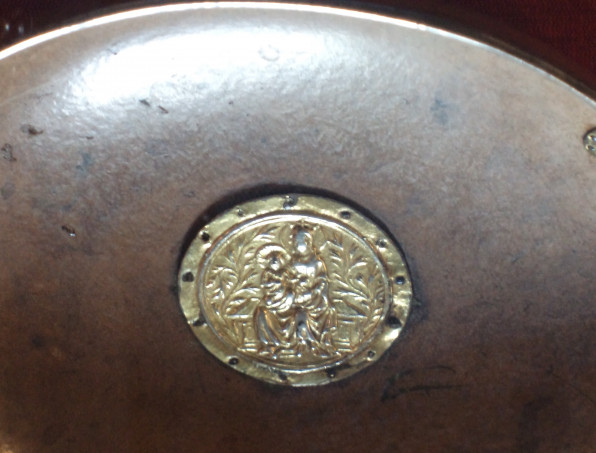
Now I appreciate much of this relies on conjecture regarding my attempt to think about how the mazers may have been used by the monks in fourteenth-century Canterbury, and therefore how they and the convent may have viewed these drinking bowls, but it does, I believe, offer insights respecting possession, ownership and use, as well as the fluidity and complexity of these concepts. This sense that things change over time, too, is valuable, which suggests to me it is worth considering virtual material culture because, I hope, they offer insights respecting commemoration and the desire to unite the community of the living and the dead in medieval society. Consequently, I hope you have found this interesting and many thanks to those who have made it to the end!
 Centre for Kent History and Heritage
Centre for Kent History and Heritage Sheila Sweetinburgh
Sheila Sweetinburgh 1395
1395

